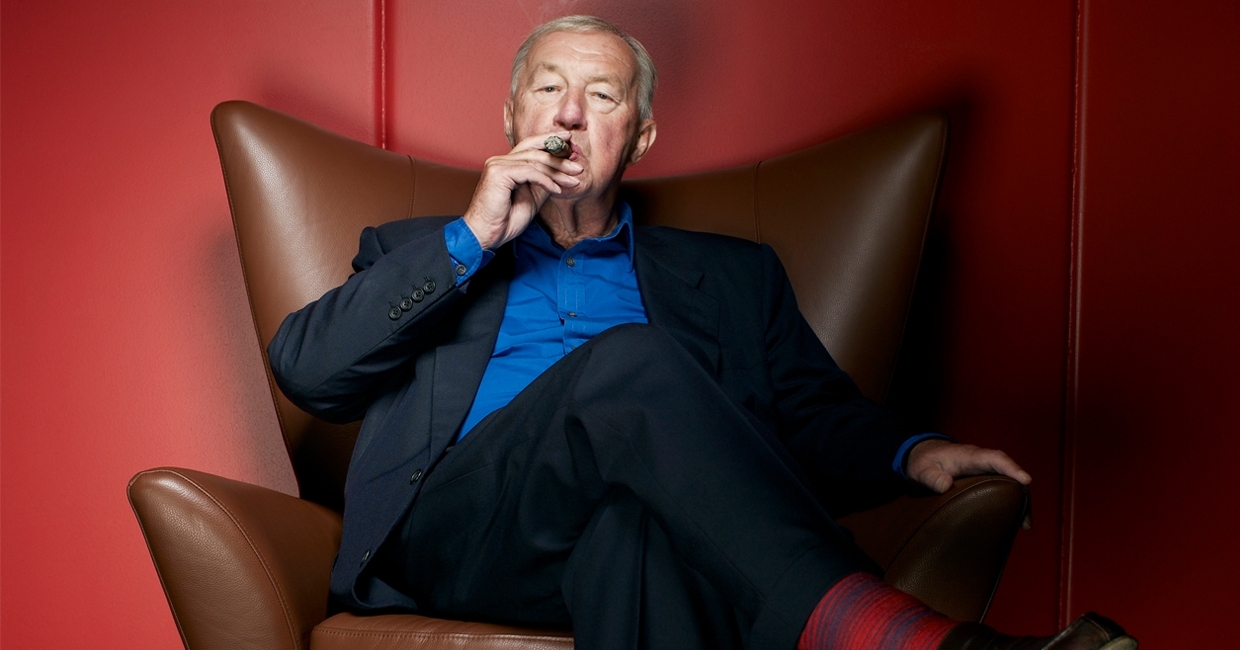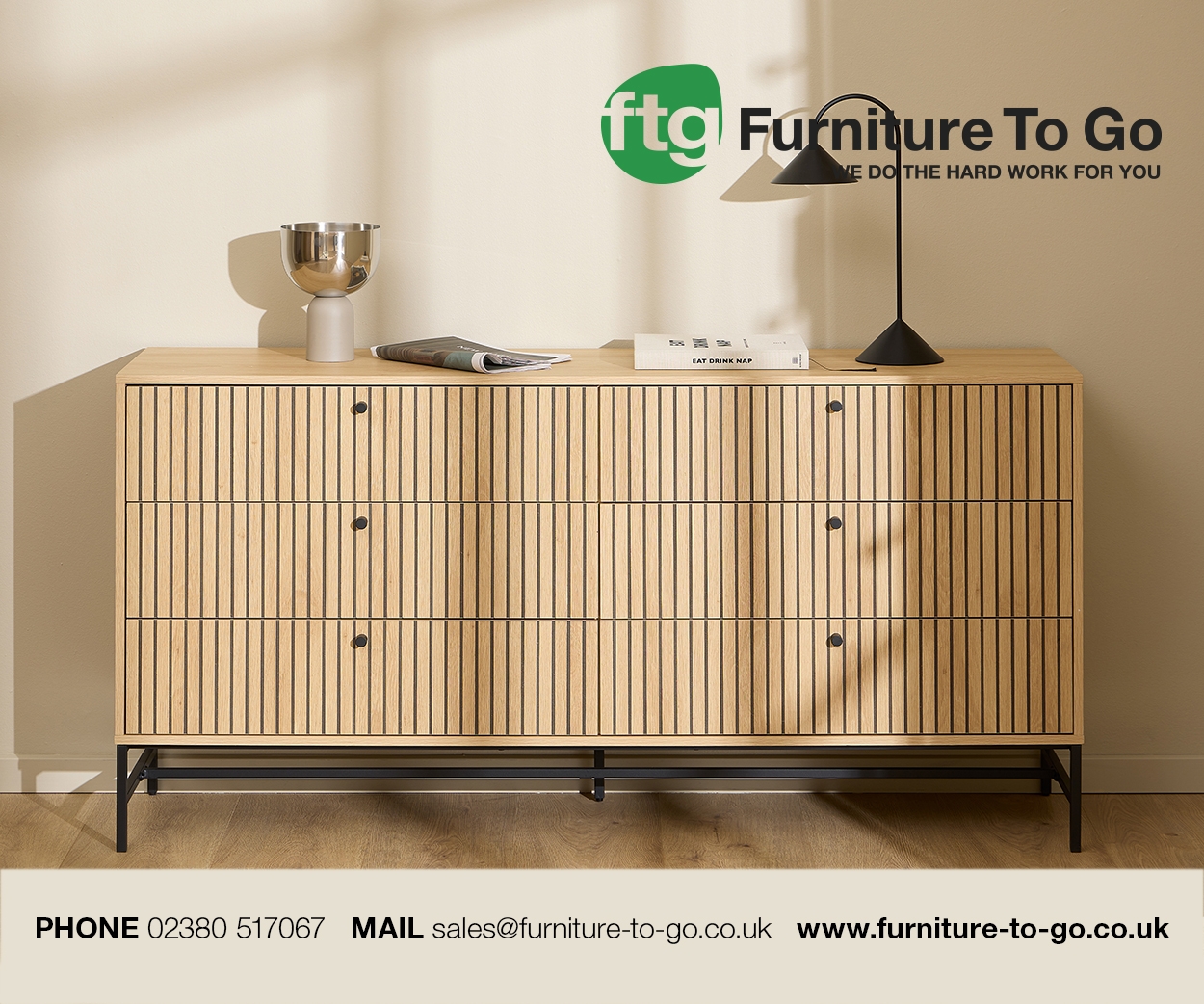The founder of Habitat, industry icon Terence Conran has led a rich life in furniture design. At 88, he remains busy developing contemporary lines for Benchmark, The Conran Shop, and Content by Terence Conran, discovers Furniture News …
Terence has been involved in the design world since 1947, when he started out as a student at the Central School of Arts and Crafts, studying textile design. He opened his first furnituremaking workshop in London’s East End with Eduardo Paolozzi in 1949, and between 1949 and 1951 worked for architect Dennis Lennon on myriad projects, including the Festival of Britain.
In 1955 Terence launched his own company, Conran Fabrics, and in 1956 he created the Conran Design Group. In 1962 he moved his furnituremaking business to a factory in Thetford, Norfolk, taking nearly 80 staff from London with him and launching Summa, his first purely domestic range of flat-pack furniture.
In 1964 he opened his first shop, Habitat, which grew into a global business, with stores around the world. He opened the first Conran Shop in 1973, which also has stores around the world.
In 1986, Terence set up a new furnituremaking business called Benchmark Furniture in the grounds of his Berkshire home, and in 1989 he founded the Design Museum in London in an old banana warehouse in Butlers Wharf. The museum has now moved to new premises in Kensington.
In 2003 he launched Content by Terence Conran, a modern furniture business that makes designs for contemporary living.
How did you enter the trade?
I suppose in my heart I have always considered myself a furnituremaker – even as a 10-year-old I was making furniture, so it all happened fairly organically.
I remember around 1947 I had a small room in Warwick Gardens but I absolutely detested the furniture and wanted to make my own, so I established a small workshop. That allowed me to do smaller pieces of work for other people, and it built from there. Establishing bigger premises, eventually employing staff, taking on machinery … before you know it, you’re running your own furniture business. Looking back, I’m rather proud of my early furniture and it seems relatively fresh today.
Who was your inspiration?
As a student at the Central School of Arts and Crafts a young sculptor called Eduardo Paolozzi came to teach. He was a wonderfully rugged man, and from the first moment I met him he had a profound influence on my approach to art and design and, most importantly, life.
He taught me about textiles, pattern and art, and I taught him how to weld – a fair trade, I think. We shared a workshop, renting a small space in Roman Road, Bethnal Green, acquired some simple tools and basic welding equipment and set about making things. Materials and equipment were scarce in those frugal post-war years, so we scrounged old bits of metal from building sites and textiles from stalls on Petticoat Lane.
I used welded reinforced rods to make frames for chairs or the base of a bed, pine flooring boards were made into shelving units, and my wobbly trestle table had an old door as the top. I used coloured felt to make cushions and printed curtains in a very Paolozzi-like pattern. We became lifelong friends.
What was you career high point?
Creating Habitat, and the thrill of seeing all our hard work and enterprise a decade earlier coming to fruition, was very special. We’d overcome so much frustration at the established order who didn’t believe in any of the ideals and beliefs that we were so passionate about. By the early 60s we’d designed first-rate furniture for a modern generation, but the retailers just wouldn’t accept it or display it properly – so we opened our own shop instead.
I suppose the high point would have been when we floated the business and we really knew we’d made it. Our little baby had grown up and there were stores not only all round Britain, but all over the world, too. We’d created a highly profitable, popular and successful global brand.
… and low point?
The way I first lost control of Habitat and then became removed from the business altogether was easily the saddest and most depressing time of my life. As we created a retail giant in Storehouse, it became too big to control or allow me the day-to-day personal involvement that gave me so much pleasure. It was a political log jam. I hadn’t designed any furniture for near-enough a decade.
While losing Habitat felt like the death of a much-loved family member, the money I had made from it allowed me to start a bright and exciting new chapter in my life and create a restaurant group, focus on The Conran Shop and get designing again.
… and the turning point?
I suppose it is the time when you take on staff – that was a very important time in my life, because you suddenly have responsibility for other people and not just yourself. Finding work to keep my men busy, paying wages and paying tax, too – it forced me to define my objectives and target the sort of customers I was aiming to sell my furniture to, which meant creating the sort of furniture they might buy. That was when I started to grow up fast and take things more seriously.
Describe a typical working day
That is the beauty of my line of work – one day is rarely similar to another. I do find the mornings are best for my creative work as that is when my mind is at its sharpest, before I get bogged down in meetings or with paperwork and suchlike.
But being a designer working in so many different fields each day throws up so many new and unexpected challenges that life really is a thrill. I’m very lucky in that sense because it rarely feels like what I do is a job - most things I do I would happily do for pleasure.
If you had to start over, which career might you pursue?
I think I’d enjoy working with nature, either as a farmer or gardener. My walled kitchen garden has been one of my great pleasures. A few years ago I was lucky enough to be able to purchase a significant amount of land around my home in the country, and have employed a small and passionate team to bring the area to life.
We’ve already had tremendous success with the rivers and streams, rejuvenating a three-mile stretch and bringing back all manner of fish that had been lost. We’re planting trees and wildflowers to encourage butterflies, moths and dragonflies and create an abundance of wildlife. Nature has always been one of my great inspirations – perhaps I could have forged a career working closely with it.
What is the most important issue affecting your business right now?
Without doubt, that would be Brexit. It has paralysed the country in almost every way imaginable and created a complete fug around the industry and Britain’s economy. What is more, it is difficult to see where the end lies or what the future of the country and our industry might look like if anything ever does get resolved.
I have survived six or seven recessions during my lifetime but have never known a log jam quite like this. I am a proud British patriot as well as considering myself European, but it is not a great time to be doing business here, and I genuinely fear for future generations.
Which company do you look up to?
Many, many years ago I was hopelessly jealous of Robin Day and his work with Hillie. His work was much more refined and sophisticated, and I dreamed of what I could achieve with a large and sophisticated manufacturing company behind me. Throw in the Cheyne Walk address and glamorous wife … Robin was where we all wanted to be, and this shaped my own early ambitions.
I think ercol have adapted well to remain contemporary but keep their strong, traditional identity, while Russell Pinch has created an extraordinary modern furniture company alongside Oona.
Overseas, I remain hugely impressed with Knoll, and we do so much great work with them through The Conran Shop. They have the same spirit of boldness and adventure that entranced me as a young student when I read about the work of George Nelson, Oliver Girard, Florence Knoll, Eero and Eliel Saarinen, Harry Bertoia and Mies van der Rohe in a West Coast magazine called Arts and Architecture. Some of the collaborations and pieces we have developed together have been absolutely first class.
What would you most like to change about yourself?
My age! That would also help with the cripplingly painful bad back I struggle with. I have always been a hands-on, sleeves-rolled-up sort of designer. That was a key point in my learning – when I began to understand that a designer has to get their hands dirty when making things, understanding materials and processes, how to use their tools and understanding the way machines work.
At 88, it is hard to be that sort of designer, and although I have a bright and brilliant young team around me, I do feel a great frustration.
What do you enjoy most about working in the trade?
Seeing your work through from the very start of a project to the end has always given me immense pleasure. From that very first seed of an idea, the creative spark, sketching it out and then working through the problems, solving issues and sending it into production.
Then seeing your work on the shopfloor or in a magazine clipping, knowing it is out there in people’s homes, giving them comfort and satisfaction.
Can you leave us with an industry anecdote?
Oh, I have a lifetime of anecdotes after a very long career in design, furniture and retail. An early one that sticks in my mind was in the mid-50s as a member of the Royal Society of Industrial Artists, which had strict rules that members should not compete with one another.
I desperately needed more work, so produced a simple newsletter to send to potential clients telling them what work we had done and suggesting how our services might benefit them.
I received an irate phone call from the secretary of the society, as there had been complaints about our newsletter from other members. He suggested a club in Pall Mall if I wanted more work. I was appalled by this and continued to produce my letters, and I was thrown out of the society.
Can you imagine a company today not being allowed to promote themselves commercially in the marketplace? They would be out of business before they even began.











